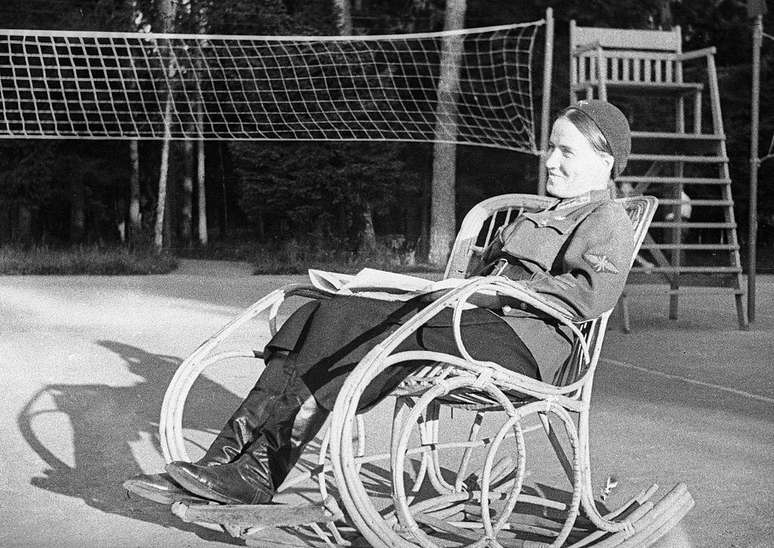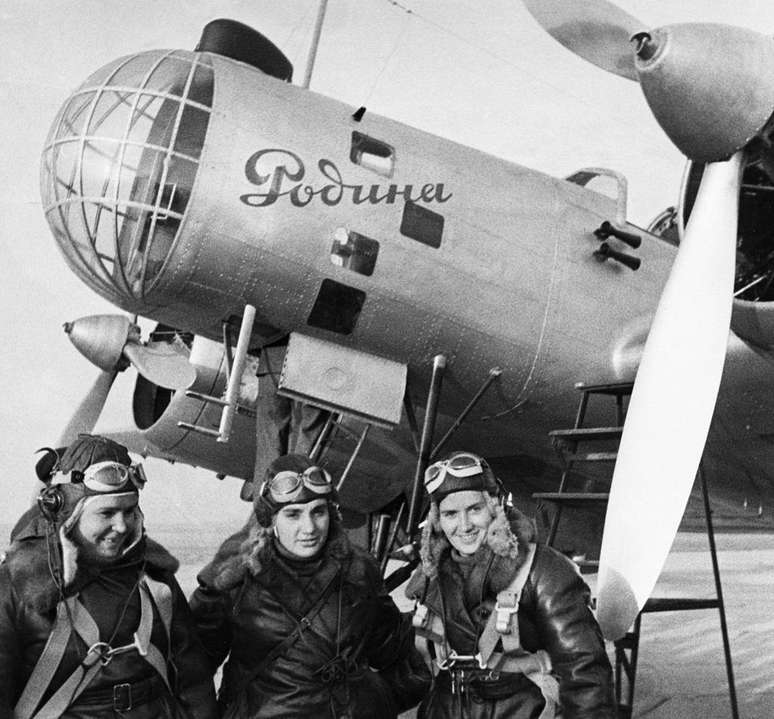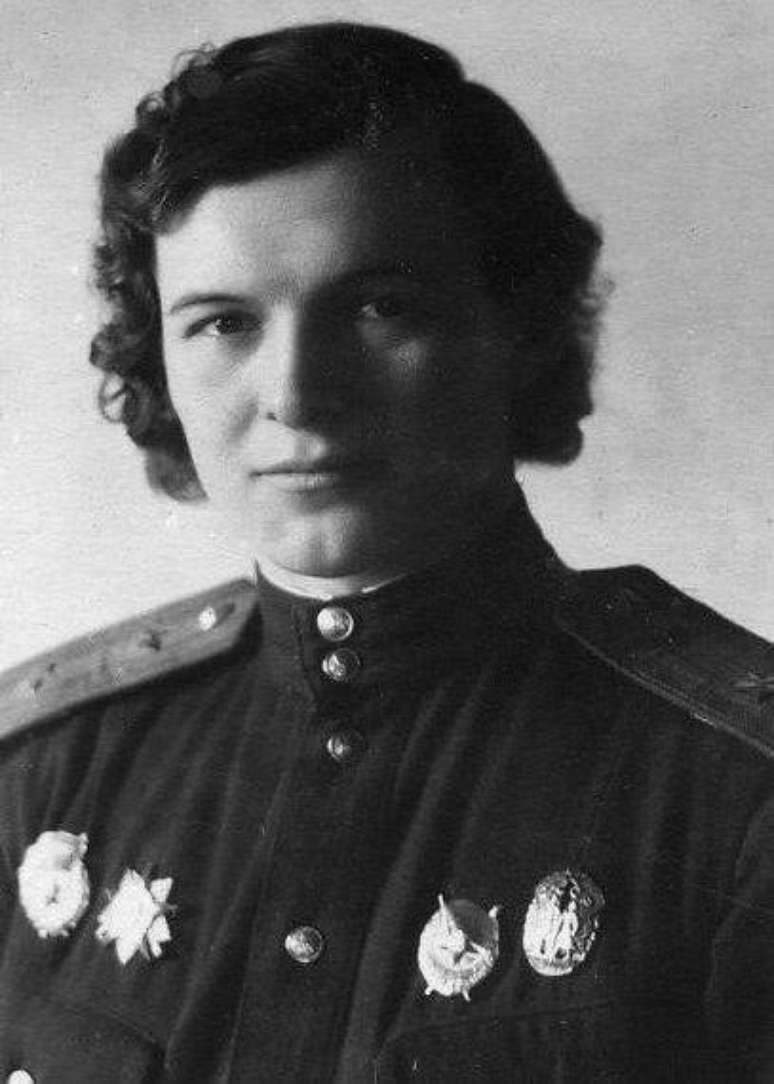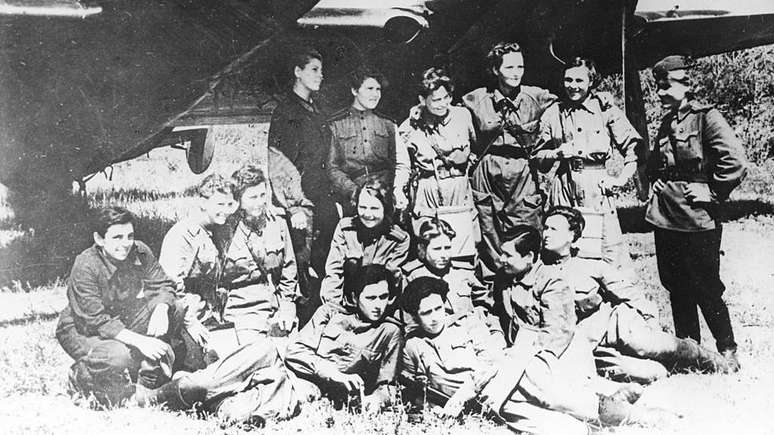The women of the 588th Night Bomber Regiment helped the USSR defeat the German army.
German soldiers said that the sound of the wind on the wings of that group’s planes resembled the movement of a broom – and so they began to call them the “night witches”.
They were very young, mostly teenage volunteers, who had to overcome not only the hardships of war, but also the skepticism and machismo of the time, which led many to doubt whether a squadron composed exclusively of women would be successful.
However, the airmen of the 588th Night Bomber Regiment managed to drop more than 23,000 tons of bombs on German targets and became a key player in the Soviet victory over the Nazis in World War II.
“At first the men laughed at us,” said Russian mathematician and physicist Irina Rakovólskaya, who led the regiment for some time, in a 1993 interview.
Later, according to her, things changed. “They saw how we flew and the men of the night bomber regiment began to call us ‘sisters’, and the infantrymen said we were ‘heavenly creatures’, while the Germans called us ‘night witches’,” Rakovólskaya added, at the time.
The policies of the then Soviet Union, which guaranteed the same education for boys and girls, allowed many young women to learn to fly, as Debbie Land, who researches female aviators at the Shuttleworth Collection aviation and automotive museum in England, explains. an interview on the radio program The documentaryfrom the BBC World Service.
At that time there was a program similar to that of scouts in the Soviet Union, in which boys and girls could learn to fly completely free of charge, he says.
For this reason “when the Germans invaded and devastated the Russian troops, these girls were ready.”

Led by a heroine
Many were studying physics, astronomy, geography, mathematics or chemistry at university when Germany attacked the Soviet Union on June 22, 1941 and the state called the men to fight.
They didn’t want to be left behind.
Large numbers of young women began writing letters to Marina Raskova, who was already a famous pilot in the Soviet Union at the time – and who would become instrumental in the formation of the squadron.
Marina Raskova was the first woman in the Soviet Union to obtain a professional pilot’s diploma and became a heroine when she broke the record of a long-distance non-stop flight in 1938.
On that occasion Raskova participated not as a pilot, but as a navigator of the flight, in a crew also made up of two other women.
The journey was quite turbulent and the navigator had to parachute before the emergency landing. She spent 10 days alone in the Siberian taiga, without food and almost without water, searching for the plane.
This adventure, and the book she later wrote recounting her experience, earned her celebrity status in the Soviet Union.
Young pilots who wanted to fight for their country – but were only offered support positions in offices or nursing – clearly knew where to turn.
Raskova then approached Soviet leader Josef Stalin, who was an admirer of hers, and asked him to form his own team, made up exclusively of women.
Stalin agreed, and Raskova created three female regiments: the 586th Air Combat Regiment, the 587th Air Bomber Regiment, and the 588th Night Bomber Regiment, which would become popularly known as the “Night Witches.”

The Soviet Union thus became the first nation to officially allow women to participate in combat.
“There were a lot of (female) pilots, but there were almost no qualified navigators or mechanics, so they had to train women in all this kind of stuff, they had to learn these skills from scratch,” explained history teacher Reina Pennington, on the BBC Russian and Military program at Norwich Military University, USA.
Precarious planes
The women of the new squadron also had to get used to the twin-engine Polikarpov Po-2s, antiquated aircraft designed in 1928 as training and patrol planes.
They were made of plywood and canvas and were quite vulnerable, but also lightweight. The cockpit was open, so the pilots had no protection against the freezing winter nights.
“You couldn’t do much with them in daylight because they were very vulnerable. They had no protection or machine guns and they wouldn’t have been of much use against the Messerschmitts either. So all they could do was fly at night, but it was better than nothing, even if they can only carry a handful of bombs,” Pennington says.
Without equipment to improve aiming, the pilots of the 588th Regiment had to perform a dangerous operation: when they approached the target, they turned off the engine to move silently. At that time they lit a rocket so that the navigator could see where to launch the bomb. But the flame also alerted the Germans to his location.

The pilot had to maintain the stability of the plane so that the navigator could aim, which was very complicated because the Germans used powerful lights that blinded them, as well as anti-aircraft machine guns.
Since the Polikarpov Po-2s had no protection, sometimes the planes caught fire and burned like a matchbox.
The role of the “night witches” was not so much to drop bombs and sow death and destruction, but rather to “disturb the Germans, who had spent the whole day carrying out maneuvers”, as Debbie Land explained to the BBC.
“So it was more about not letting them sleep and making them work all night so they were exhausted the next day,” he added.
Unlike their male counterparts, the female regiment did not stop to smoke a cigarette or have a cup of tea between flights. Once they landed, they loaded more ammunition and set off again, sometimes up to 15 times a night, more than the men, according to reports.
The tactic of turning off the engines when approaching the target was not invented by them, but was widely used in the Air Force. But they really stood out, Pennington said, in the way they were able to make more flights each night than virtually any other unit, thanks to their innovations in aircraft maintenance and rearmament, and in the way they trained the substitutes.

Commander Yevdokia Bershanskaia developed an innovative way to refuel planes.
Instead of having each plane have a maintenance and refueling team, Bershanskaia adopted a system of production lines, with teams specializing in various tasks, such as filling the fuel tanks or rearming the plane.
“This way I could have a plane ready in just 10 minutes” and increase the number of night trips, explained the Norwich University professor.
In recognition of its successes, the 588th Night Bomber Regiment received the rank of Guard and became known as the 46th Guards Night Bomber Regiment.
She also won the Order of the Red Banner, and many “night witches” received individual decorations: 23 of them earned the title “Heroine of the Soviet Union”, the country’s highest honor.
Source: Terra
Rose James is a Gossipify movie and series reviewer known for her in-depth analysis and unique perspective on the latest releases. With a background in film studies, she provides engaging and informative reviews, and keeps readers up to date with industry trends and emerging talents.






